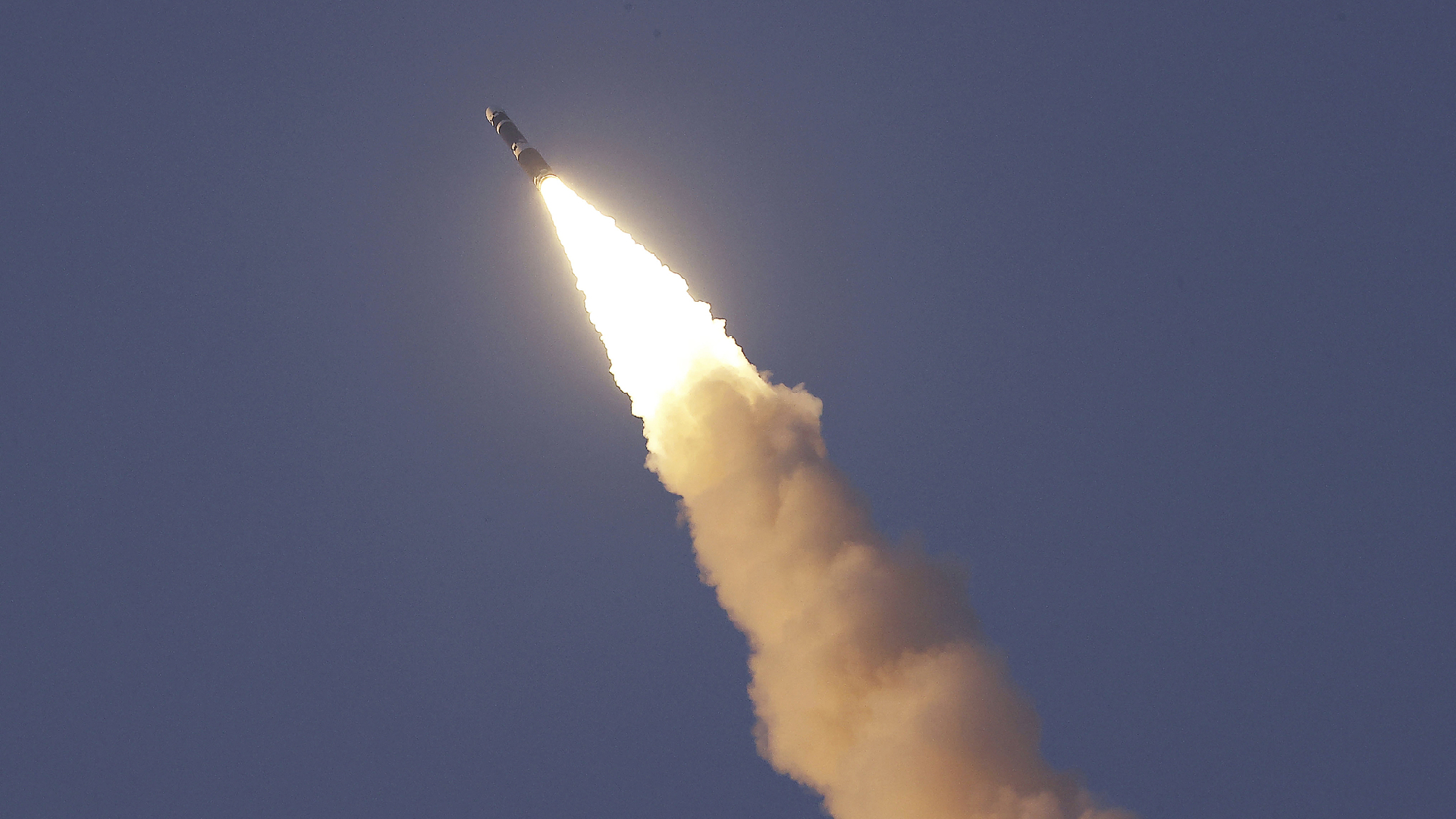The Democratic People’s Republic of Korea (DPRK) conducted a “crucial” test of its latest intercontinental ballistic missile (ICBM) Hwasongpho-19 on Thursday, the official Korean Central News Agency (KCNA) reported on Friday.
The missile flew a distance of 1,001.2 kilometers for 5,156 seconds before landing on a preset area in open waters off the country’s east coast, and the test-fire had no negative effect on the security of neighboring countries, the KCNA report said.
The test updated the recent record of the strategic missile capability of the DPRK and demonstrated the modernity and credibility of the country’s powerful strategic deterrent, and the latest strategic weapon system will function as “the primary core means” in defending the country, the KCNA said.
Kim Jong Un, general secretary of the Workers’ Party of Korea and president of the State Affairs of the DPRK, guided the event, calling the test-fire “an appropriate military action” to show the country’s counteraction in response to the escalating security situation on the Korean Peninsula and part of “an indispensable process” in the course of constantly developing the DPRK’s strategic attack capabilities, the report said.
A video of the test launch
Missiles and drones are democratizing warfare.
Imagine if we all put our heads together to explore the wonders of the universe instead of firing explody rockets at eachother.
unfortunaty large parts of our “exploring the wonders of the universe” has been developed from “firing explody rockets at eachother.”
Sure. But imagine if we actually dedicated our energy towards it instead of doing it as a side effect
Yeah no disagreement.
My comment was more being practical. IE the real world we live in. If it was not for conflict ( first ww2 then cold war ). Rockets and space travel would never have seen the funding needed to develop. This goes on the pretty much everything - GPS, communications, weather n and on. All of it was funded mainly due to the military.
Without that it is hard if not impossible to imagine the wealthy considering the investment in tech worthwhile. And at the end of it. Real world the desire for the rich to protect or grow their position is the cause of all the above throughout history.
Honestly, I’m not saying this is a good thing, it’s fucking depressing.
But without war. I doubt the world would have moved past feudalism. There just would not be the motivation to change.
1000 km and 5000 seconds. Doesn’t seem very capable of hitting much, unless it flew intentionally a very high arc.
Love the solid rocket exhaust aesthetics though. Too bad it is produced as a weapon.
ICBM tests do fly in a very high arc though, the point is to test the range while making it clear that no one should be worried about it striking them.
“landing on a preset area in open waters”.
yeah sure…
EDIT - OOPS, I’m on a .ml site. whoops, I’ll see myself out.
? Is there some source that says otherwise or something?
My bad, I didn’t check which instance I’m commenting in. have a nice day!
So you brought that out of thin air? Weird thing to say without any basis
“My bad, I talked shit on an instance that doesn’t put up with shit.”
don’t let the door hit you on the way out
That is pretty standard for missile testing?
Not in USA, they tested nuclear bombs on humans, in Japan and Bikini atoll.
Greater Satan moment
They don’t test their weapons on people, like the US does:
- Between 1946 and 1958, the US tested 23 nuclear devices at Bikini Atoll, using the native islanders and their land as guinea pigs for the effects of nuclear fallout. Significant fallout caused widespread radiological contamination in the area, and killed many islanders. A survivor stated, “What the Americans did was no accident. They came here and destroyed our land. They came to test the effects of a nuclear bomb on us. It was no accident.” Many of the islanders exposed were brought to the US Argonne National laboratory, to study the effects. Afterwards the islands proved unsuitable to sustaining life, resulting in starvation and requiring the residents to receive ongoing aid. Virtually all of the inhabitants showed acute symptoms of radiation syndrome, many developing thyroid cancers, Leukimia, miscarriages, stillborn and “jellyfish babies” (highly deformed) along with symptoms like hair falling out, and diahrrea. A handful were brought to the US for medical research and later returned, while others were evacuated to neighboring Islands. The US under LBJ prematurely returned the majority returned 3 years later, to further test how human beings absorb radiation from their food and environment. The islanders pleaded with the US to move them away from the islands, as it became clear that their children were developing deformities and radiation sickness. Radion levels were still unacceptable. The United States later paid the islanders and their descendants 25 million in compensation for damage caused by the nuclear testing program. A 2016 investigation found radiation levels on Bikini Atoll as high as 639 mrem yr−1, well above the established safety standard threshold for habitation of 100 mrem yr−1. Similar tests occurred elsewhere in the Marshall Islands during this time period. Due to the destruction of natural wealth, Kwajalein Atoll’s military installation and dislocation, the majority of natives currently live in extreme poverty, making less than 1$ a day. Those that have jobs, mostly work at the US military installation and resorts. Much of this is detailed in the documentary, The Coming War on China (2016). 1,2









